I have a keyboard from an old Silent 700 TTY that I'm trying to bring to life. The problem is that each individual keyswitch appears to be a hall effect sensor. There are no part numbers; the chip dies are individually bonded to the carrier boards.
Here's the switch. The carrier board fits into a slot in the back of the switch in the orientation shown:

And here's the die:

Does anyone have any thoughts on how to drive a switch like this?